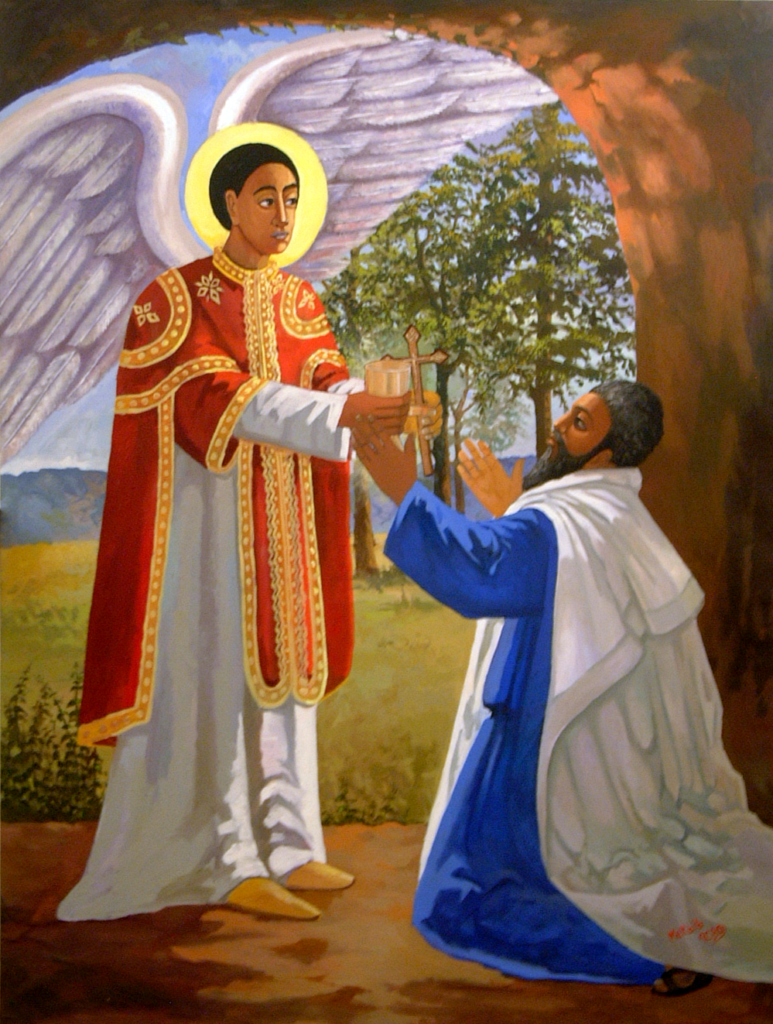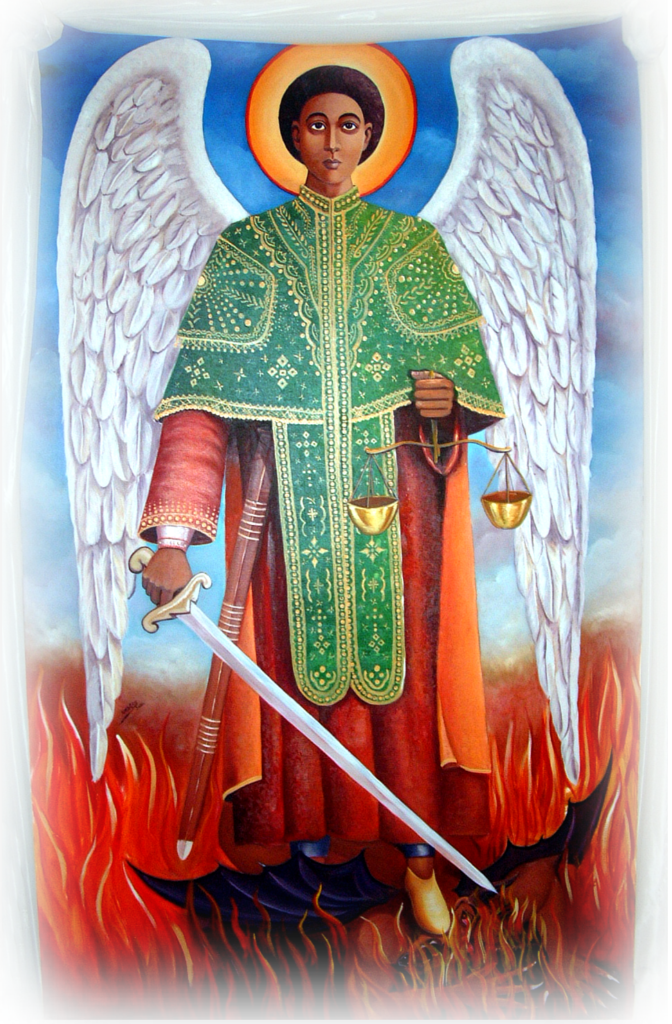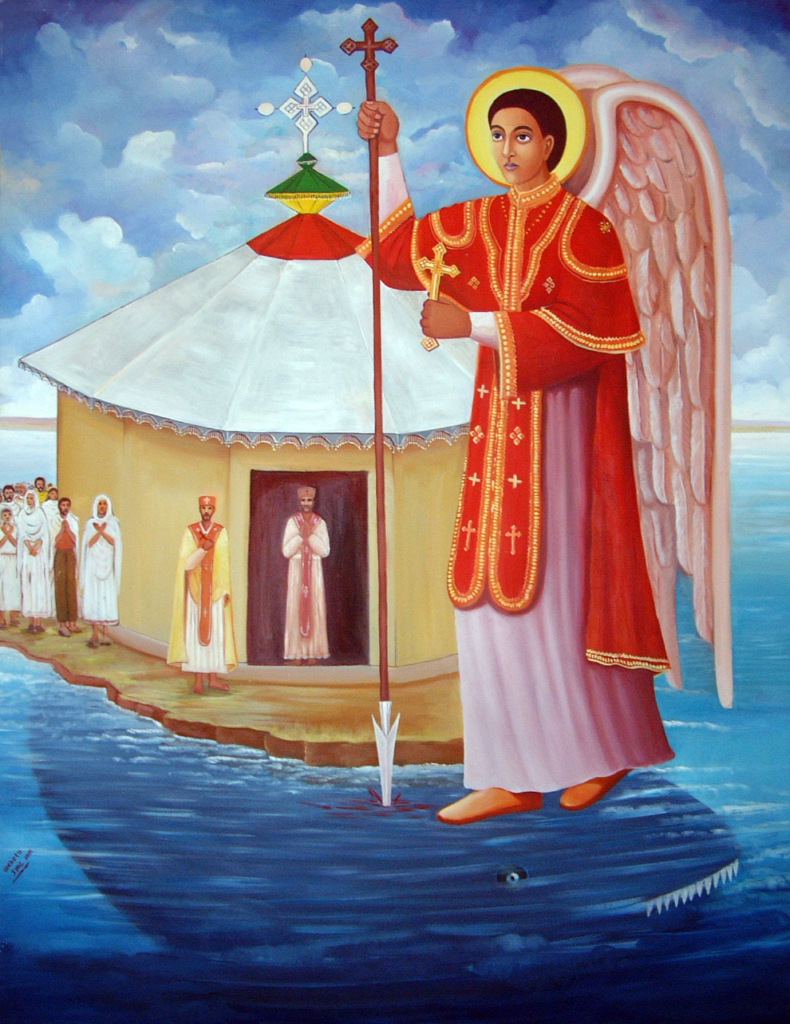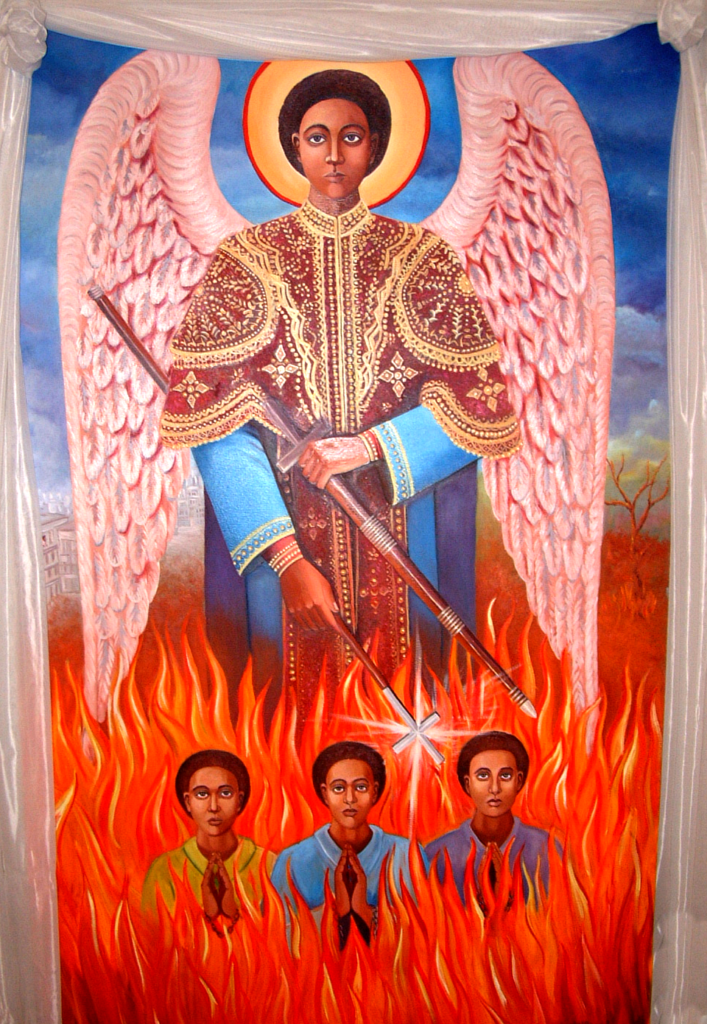Theology
TEWAHDO
The word “Tewahdo” is the Ethiopian term (meaning “made one”) which is the best expression conveying the faith of the Church, since it emphasizes the inseparable unity of the Godhead and Manhood in the Person of Christ. The Church’s official title is “የኢትዮጵያ ኦርቶዶክስ ተዋሕዶ ቤተክርስቲያን” – The Ethiopian Orthodox Tewahdo Church.




